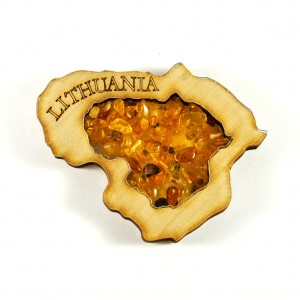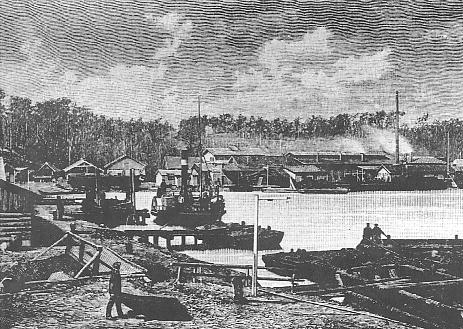 Amber has been around on this earth for millions and millions of years, and we know that it is one of the world's most fascinating semi-precious stones, with a long historical background. Then something happened in a European country in the 19th century, something that generated a chain of events which led to the establishing of the amber industry and more precisely, the amber industry in Lithuania.
Amber has been around on this earth for millions and millions of years, and we know that it is one of the world's most fascinating semi-precious stones, with a long historical background. Then something happened in a European country in the 19th century, something that generated a chain of events which led to the establishing of the amber industry and more precisely, the amber industry in Lithuania.
Amber deposits were found in 1854, during the dredging of a ship channel, in the Juodkrante, a coastal resort. W.Stantien, who was a famous businessman originating from Klaipeda, manifested an interest and set up a firm known as "Stantien and Becker". His company obtained good quality raw amber by performing dredges and dives between 1860 and 1890. Reports say that approximately 75,000 kilograms of amber would be recovered annually. In the good years, the company's production would rise to 500,000 kilograms. This was all done with the help of special ships, machines and equipment and, of course, a large number of employees. Reports say that up to 500 people were engaged in this work.
 By the end of the 19th century, there were significant discoveries in the Courish Lagoon. Large deposits of amber were found in the area and this led to important growth in the amber industry in Lithuania. Jewelers, artisans and craftsmen from the two amber centers of Palanga and Klaipeda were at that time in great competition with those of "Koenigsberg" - now known as Kaliningrad - and "Gdansk" - known as "German" Danzig. The 500 workers involved in the two amber centers would each process approximately 20,000 kilograms of raw amber material before World War I.
By the end of the 19th century, there were significant discoveries in the Courish Lagoon. Large deposits of amber were found in the area and this led to important growth in the amber industry in Lithuania. Jewelers, artisans and craftsmen from the two amber centers of Palanga and Klaipeda were at that time in great competition with those of "Koenigsberg" - now known as Kaliningrad - and "Gdansk" - known as "German" Danzig. The 500 workers involved in the two amber centers would each process approximately 20,000 kilograms of raw amber material before World War I.
World War I meant almost absolute destruction of the amber industry in Lithuania. Palanga and Klaipeda were destroyed almost entirely. Fortunately, the industry recovered after the war, between 1918 and 1939 - the Lithuanian Independence period. Ten artisan shops found in Palanga, Klaipeda and Kretinga used to satisfy the domestic and foreign demand of amber. Hundreds of people were employed in order to process approximately 10.000 kilograms of raw amber annually. It is notable that almost half of it was imported from Germany. Also worth mentioning is that the remnants of the craftsmen's work equaled the amount imported and was later on exported back to Germany for chemical use in plants and other facilities.
It is interesting how World War II almost destroyed the amber industry in Lithuania for the second time. And again, the industry managed to recover, by gradually reopening shops for amber processing. The first reopened shops were found in Palanga, Kaunas, Klaipeda, Plunge and Vilnius. Again, hundreds of craftsmen were employed and again, the annual processing of raw amber grew to 10,000 kilograms.
During 1963, amber pits and mines from Palvininkai - "German" Palmnicken; Russian Iantarnyi - were incorporated in the amber industry in Lithuania. Those mines generate the large quantities of raw amber, but only 20% of it is good for making fine jewelry and artistic objects. For example, pressed amber, also referred to as "amberoid", can be made from good amber pieces and dust. It is used in manufacturing inexpensive items such as costume jewelry, smoking articles or electrical insulation. Also, dark and impure pieces are used in chemical power plants and factories for amber oil production, amber acid and other products.
In conclusion, the amber industry in Lithuania has had its ups and downs, but has always managed to get back on track and continued to process raw amber material for various uses.



